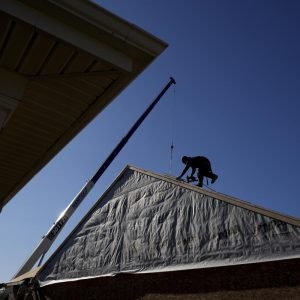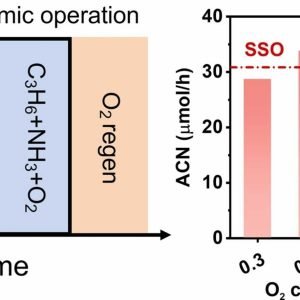
SYRIA’S government has fallen in a stunning end to the 24-year rule of Bashar al-Assad after rebels seized Damascus in a lightning blitz.
Assad fled the capital in a plane early Sunday as the butcher’s regime was overthrown by the militants in just 10 days.
Rebels stormed into Damascus on Saturday after seizing cities and towns in an almost unchecked advance from the south.
The fall of Assad is a humiliating blow for Vladimir Putin and Iran who had backed the tyrant during the civil war.
Syria has been shattered by more than 13 years of a conflict that has turned cities to rubble, killed hundreds of thousands of people, and forced millions abroad as refugees.
Syria’s army command has notified officers Assad’s rule is over – while rebels said Damascus is now “free of Assad”, Reuters reported.
Thousands have taken to the streets in celebration, firing guns into the air, lighting flares, and waving the rebel flag.
It comes as…
- Rebels say Damascus is now ‘free of Assad’ as thousands take to streets of capital
- Assad leaves Syrian capital on plane for unknown destination
- Rebel commander says they have seized control of Homs – the country’s third biggest city
- Syria’s Prime Minister says he is ‘ready to hand over power’ as he’s escorted from home by rebels
- Israel deploys forces to UN-monitored buffer zone of the Golan Heights but ‘won’t interfere’
- Trump says US should have ‘nothing to do’ with Syrian uprising
It marks the end of 50 years of rule by the Assad family – with rebels shouting “freedom” while celebrating.
The rebels have also opened the cells of a military prison in Damascus where Assad dumped anyone who threatened his rule.
The country’s prime minister said the regime was now preparing to hand over its operations to the rebels.
Fighters escorted the PM from his home to their hotel headquarters as the transition begins.
Rami Abdurrahman of the Syrian Observatory for Human Rights, an opposition group, said Assad took a flight from Damascus early Sunday.
Assad has flown to the Russian-operated Khmeimim Air Base in a part of Syria still loyal to the regime, Walla reports.
US officials believe he was intending to travel to Moscow, but there is no indication yet whether he has left the country.
There has been no official statement from Assad’s government.
Meanwhile, rebel fighters have posted footage from inside Assad’s presidential palace as they celebrate their stunning win.
In a statement read out on Syrian TV, rebel fighters declared victory and said: “Long live Syria, free and proud for all Syrians of all sects.
“The city of Damascus has been liberated, the tyrant Bashar al-Assad has been overthrown, and all unjustly detained prisoners have been released from the regime’s prisons.”
Statues of the Assad family have been toppled around the country with a bust of Hafez being decapitated late Saturday.
Rebel fighters attacking from the south arrived in Damascus yesterday after quickly advancing through the countryside.
Last night, opposition forces also seized control the key city of Homs, Syria’s third largest, as government forces abandoned it.
It was the first time opposition forces had reached Damascus since 2018 when Syrian troops recaptured areas on the outskirts of the capital following a years-long siege.
A number of countries have closed border crossings with Syria as the chaos unfolds, including Lebanon and Jordan.
All pro-Iranian forces have reportedly withdrawn from the country in a humiliating blow to the Ayatollah.
Iran has lost a key ally in its Shia axis across of proxies and allies in the Middle East.
The fall of Assad is also a humiliating blow for Vladimir Putin who had backed the tyrant during the civil war.
In return, the Kremlin was allowed to operate two military bases inside Syria.
One of those was a naval base – giving the Russian a port in the Mediterranean.
But those bases might now be under threat as the rebels look to boot the Russians out of the country.
A timeline of the Syrian civil war
The sudden collapse of Assad’s rule over Syria could mark the end of a nearly 14-year civil war in the country.
2011 – The first protests against Assad quickly spread across the country, and are met by security forces with a wave of arrests and shootings.
Some protesters take up guns and military units defect as the uprising becomes an armed revolt that will gain support from Western and Arab countries and Turkey.
2012 – A bombing in Damascus is the first by al Qaeda’s new Syrian affiliate, the Nusra Front, which gains in power and starts crushing groups with a nationalist ideology.
World powers meet in Geneva and agree on the need for a political transition, but their divisions on how to achieve it will foil years of U.N.-sponsored peace efforts.
Assad turns his air force on opposition strongholds, as rebels gain ground and the war escalates with massacres on both sides.
2013 – Lebanon’s Hezbollah helps Assad to victory at Qusayr, halting rebel momentum and showing the Iran-backed group’s growing role in the conflict.
Washington has declared chemical weapons use a red line, but a gas attack on rebel-held eastern Ghouta near Damascus kills scores of civilians without triggering a U.S. military response.
2014 – Islamic State group suddenly seizes Raqqa in the northeast and swathes more territory in Syria and Iraq.
Rebels in the Old City of Homs surrender, agreeing to move to an outer suburb – their first big defeat in a major urban area and a precursor to future “evacuation” deals.
Washington builds an anti-Islamic State coalition and starts air strikes, helping Kurdish forces turn the jihadist tide but creating friction with its ally Turkey.
2015 – With better cooperation and more arms from abroad, rebel groups gain more ground and seize northwestern Idlib, but Islamist militants are taking a bigger role.
Russia joins the war on Assad’s side with air strikes that turn the conflict against the rebels for years to come.
2016 – Alarmed by Kurdish advances on the border, Turkey launches an incursion with allied rebels, making a new zone of Turkish control.
The Syrian army and its allies defeat rebels in Aleppo, seen at the time as Assad’s biggest victory of the war.
The Nusra Front splits from al Qaeda and starts trying to present itself in a moderate light, adopting a series of new names and eventually settling on Hayat Tahrir al-Sham (HTS).
2017 – Israel acknowledges air strikes against Hezbollah in Syria, aiming to degrade the growing strength of Iran and its allies.
U.S.-backed, Kurdish-led forces defeat Islamic State in Raqqa. That offensive, and a rival one by the Syrian army, drive the jihadist group from nearly all its land.
2018 – The Syrian army recaptures eastern Ghouta, before quickly retaking the other insurgent enclaves in central Syria, and then the rebels’ southern bastion of Deraa.
2019 – Islamic State loses its last scrap of territory in Syria. The U.S. decides to keep some troops in the country to prevent attacks on its Kurdish allies.
2020 – Russia backs a government offensive that ends with a ceasefire with Turkey that freezes most front lines. Assad holds most territory and all main cities, appearing deeply entrenched. Rebels hold the northwest.
A Turkey-backed force holds a border strip. Kurdish-led forces control the northeast.
2023 – The Hamas attack on Israel on Oct. 7 triggers fighting between Israel and Hezbollah in Lebanon, ultimately reducing the group’s presence in Syria and fatally undermining Assad.
2024 – Rebels launch a new assault on Aleppo. With Assad’s allies focused elsewhere his army quickly collapses. Eight days after the fall of Aleppo the rebels have taken most major cities and enter Damascus, driving Assad from power.
More to follow… For the latest news on this story keep checking back at The Sun Online
Thesun.co.uk is your go-to destination for the best celebrity news, real-life stories, jaw-dropping pictures and must-see video.
Like us on Facebook at www.facebook.com/thesun and follow us from our main Twitter account at @TheSun.














